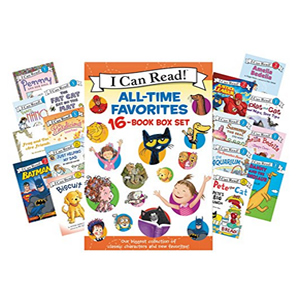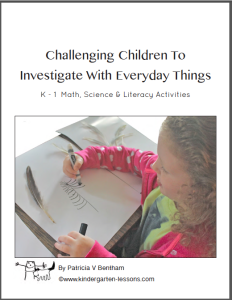There’s a lot to consider when buying a kindergarten or preschool curriculum. What’s included in the kit, what is a typical day like, what will my children learn, will I receive any support are all questions that you may be thinking about.
Some will be wondering if it is necessary to buy a homeschool preschool curriculum (or kindergarten curriculum)? Questions such as, what do I need to teach and how do I teach it, are answered on the various subject pages of this site.
If you do decide to go with a commercial curriculum, before investing a lot of money into it, check to see if it fulfills the following five criteria below.
1. Is it literature rich?
Including daily literature in your homeschool routine teaches children that books are for reading, that the black marks on the paper represent words and letters, that letters represent sounds, that print is read from left to right, and that there are many different ways that they can respond to literature.
- Does the homeschool curriculum provide good literature or links to good literature to read to your child each week?
- Does it immerse your children in literacy experiences?
- Does it engage children in a variety of reading and writing activities?
- Does it provide for students to explore books of various genres?
- Does it combine literature with mathematics?
- Does it show you how to make a print rich environment for your child? Labels with words and pictures everywhere so that students constantly connecting written language with objects.
- Does it provide students with opportunities to write and draw, to use student journals and create books? Does it encourage the use of dictionaries, encyclopedias, and word walls?
If the curriculum only provides a pile of worksheets for your child to fill in every day, they will be missing out on many literature rich experiences.
2. Is it age appropriate?
Choose a curriculum that understands how young children learn and that does not have a lot of formal, highly structured learning experiences. Young children need to learn by touching, by investigating and experimenting with activities that are hands on and at their level of development. Children need to figure stuff out for themselves and have opportunities to talk and ask questions. They need to interact with others and have sensory experiences. They need to solve problems and wiggle and play. Does the curriculum you are choosing to buy allow plenty of time for this?
3. Does it do the planning for you?
A major reason to go with a homeschool preschool curriculum is that it saves you time. Adding research and planning to a parent’s already busy schedule can be unrealistic. A curriculum that helps you establish a routine, tells you what to teach in an easy well-planned format will make for a more relaxed learning environment and give you more time to spend with your children.
A sample of this type of curriculum can be found here. Challenging Children to Investigate With Everyday Things, shows you how to provide your students with a new science and math investigation every week of the year. It contains everything you need to help you create a learning environment that’s a place of asking questions, exploration, problem-solving and creative thought processes AND supplies you with a year’s worth of weekly science and math investigations and recording sheets all done for you.

4. Does it cover the learning outcomes preschool and kindergarten children need to accomplish?
A well-planned homeschool preschool curriculum will give you the confidence that you are teaching the important academic concepts that your preschooler needs to learn. Although there are many opportunities to teach concepts in an everyday environment without using a curriculum, following a step by step curriculum makes sure you are not missing anything.
5. Is it fun and easy to follow?
Even teachers get overwhelmed and groan trying to plow through curriculums that have pages of complex instructions. A straight forward curriculum that gives you what you need each day is preferable. If you are less than enthusiastic about the curriculum, your children will be too.
Check that it is easy to read, that the layout has plenty of whitespaces, illustrations, and bulleted instructions.